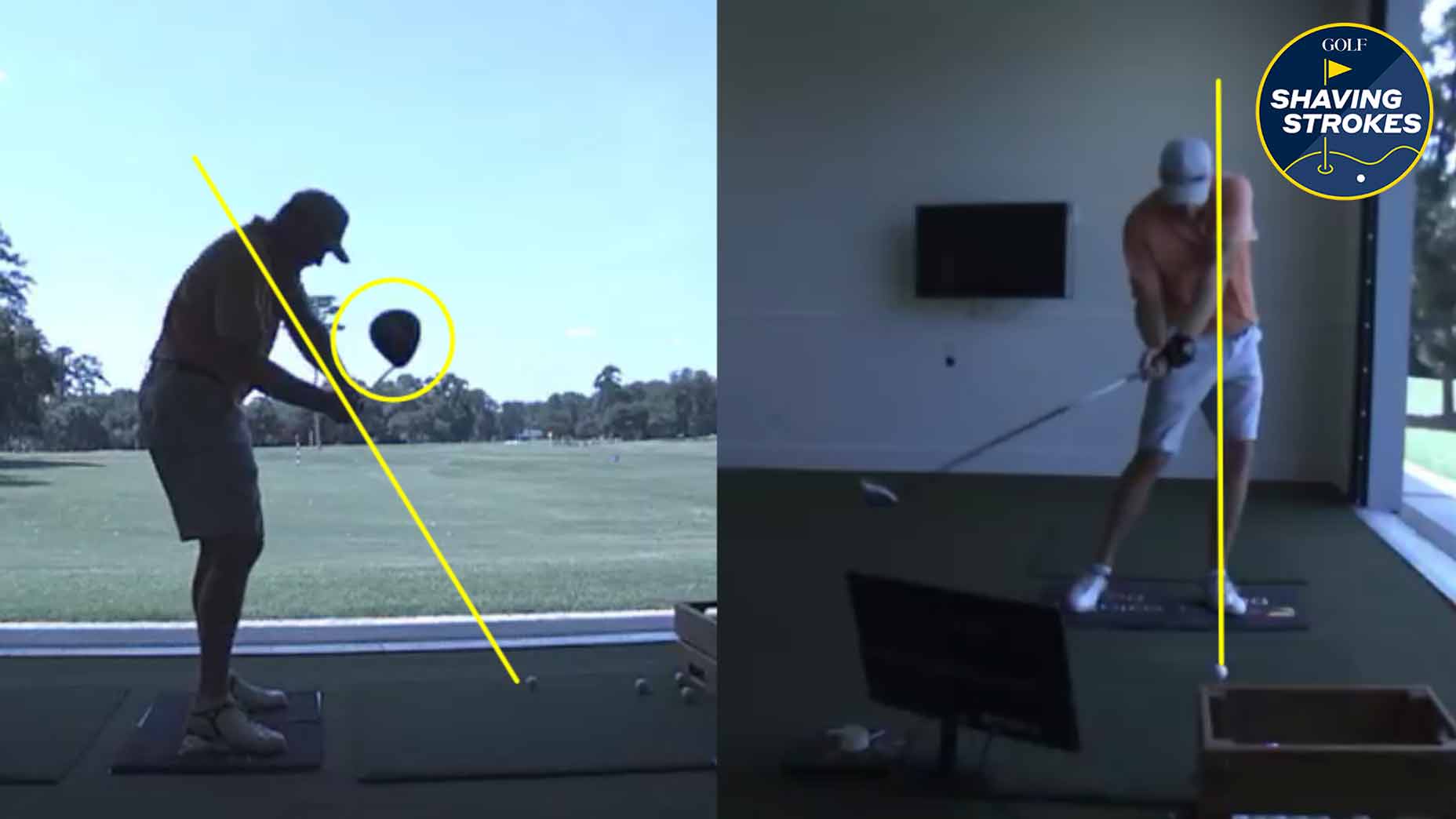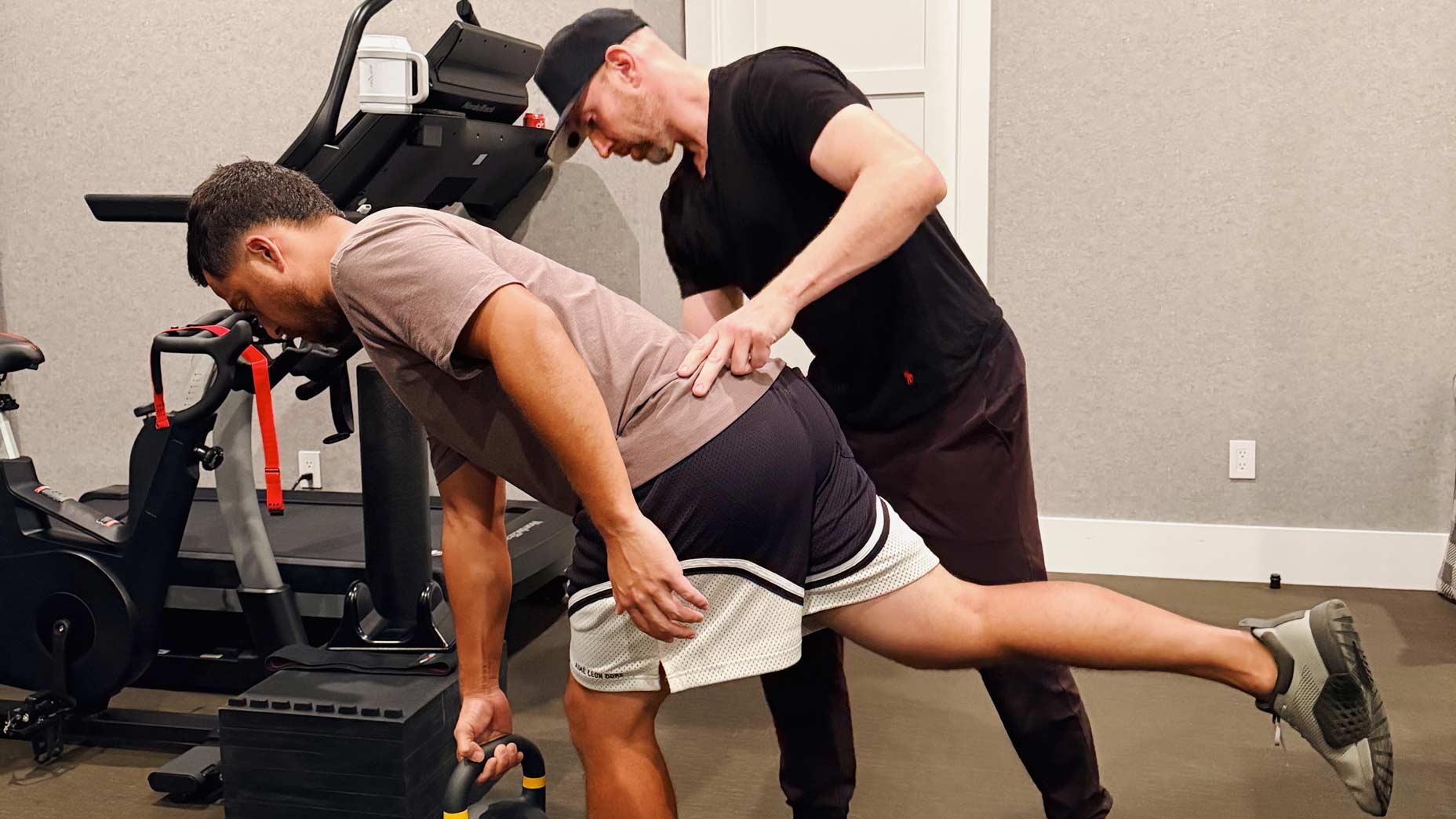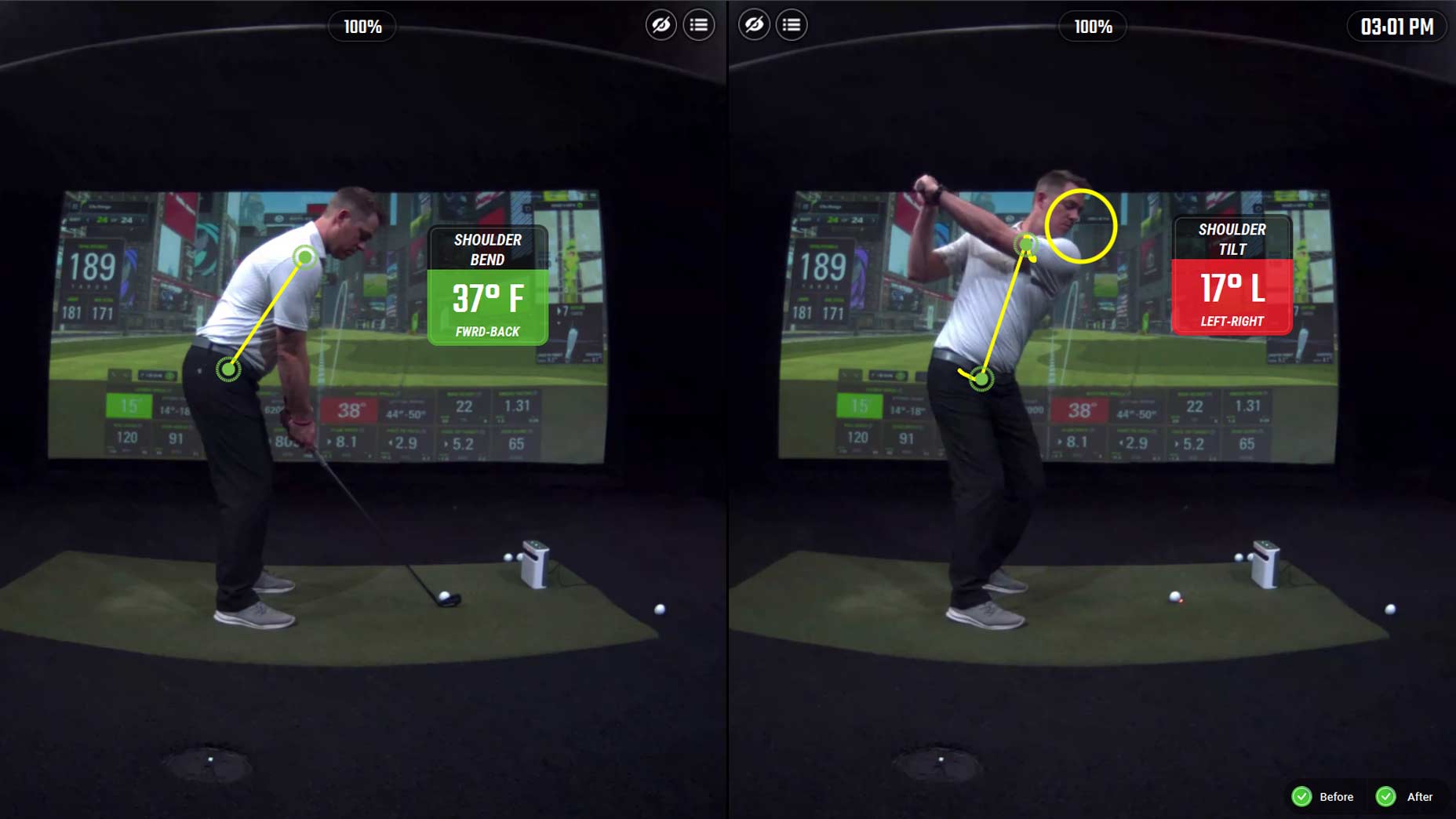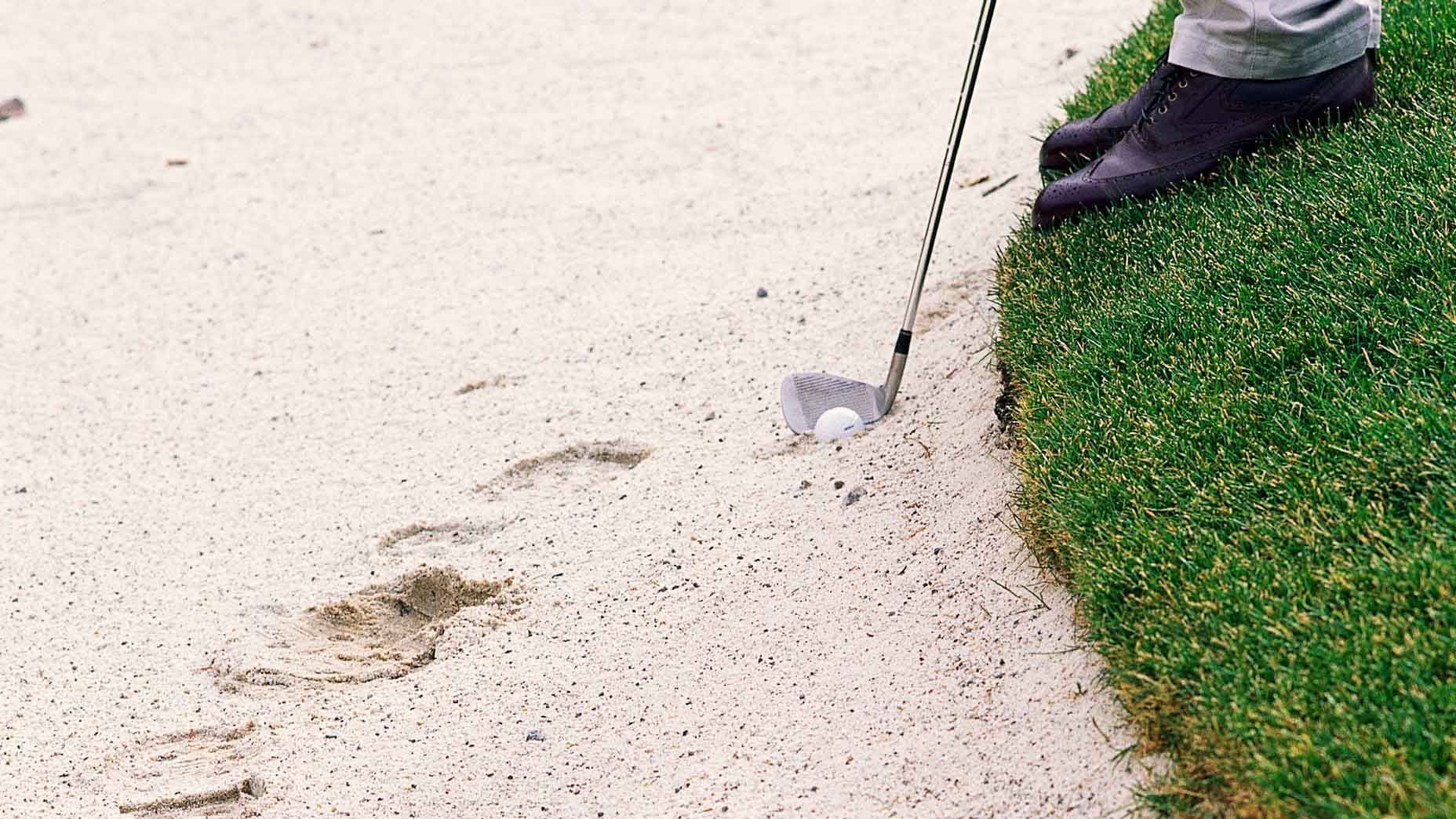Welcome to Shaving Strokes, a new GOLF.com series in which we’re sharing improvements, learnings and takeaways from amateur golfers just like you — including some of the speed bumps and challenges they faced along the way.
Every player wants to hit the ball farther, but in order to increase clubhead speed, the golfer must first have his or her fundamentals in order.
So if you’re a player who doesn’t quite rotate all the way, struggles to pivot properly, and can’t figure out how to square the face up when your swing sequence is sped up, it’s best to avoid hunting more distance right now.
That’s not to say you can’t attain your distance goals in the future. It just means that your first step should be dialing in your swing principles.
How this science teacher added 19 mph of swing speed and dropped 7 strokesBy: Lucas Wald, GOLF Teacher to Watch , Nick Dimengo
In today’s Shaving Strokes, that’s what GOLF Top 100 Teacher Joe Plecker had to work on with one of his students, Bret.
Bret had years of golf experience under his belt and even had “lots of clubhead speed,” according to Plecker. However, there were kinks in his swing that needed to be cleaned up.
So Plecker put together a plan of action for the amateur player to use in order to see those distance gains. The end result? Bret increased his clubhead speed by an extra five miles per hour, leading to a whopping 27-yard increase in carry distance with his driver.
Plecker walks through the instruction steps that he used with Bret — which should be helpful for any other player looking for more length.
How Bret increased both clubhead speed and driver distance
According to Plecker, “Bret’s driver is the most errant club in his bag, leading to hooks and slices. His swing type is mostly ‘under’, and requires a right-hand grip that tucks under the club and gets his right elbow into his side.
“His setup usually leans his upper body towards the target, and at the top of the backswing, reduces pressure over his right foot. This error throws the entire forward swing into a steep, out-to-in path of the club.”
Given his swing tendencies, improving Bret’s posture was the area that Plecker identified as most critical to see more clubhead speed and distance. So the GOLF Top 100 Teacher had Bret use a more upright position.
Next, Plecker says he worked on a more level turn of Bret’s shoulders, which helped create more shift to the right side.
“This gave him lots of time to shift forward, shallow the downswing, and crush the ball,” added Plecker. “This gave him his old draw back.”
Below is a before image of Bret’s setup, which highlights his forward-press position at address.
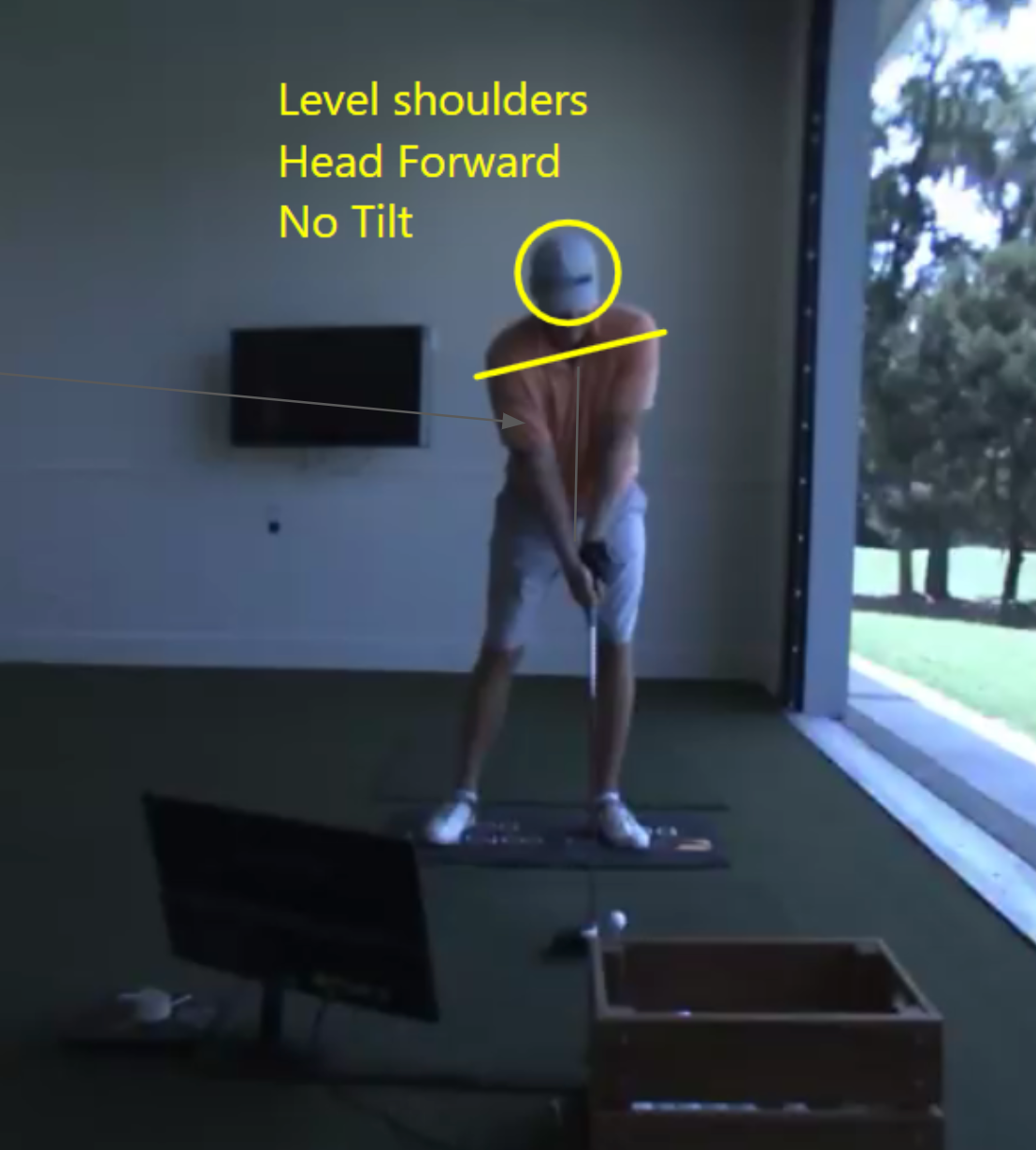
Next, the image below shows what Bret’s ball flight looked like with his poor golf posture. Bret’s spin rate with his driver was too high (4589) due to him hitting down (-4.6 attack angle), causing a decrease in overall distance (256 yds).

After identifying the issue, Plecker was able to get Bret to stand more upright. By standing taller at address and raising the lead shoulder, this moved Bret’s head back, directly influencing the pressure and pivot of his backswing.
The setup change also led to more pressure on Bret’s right foot (trail foot), increasing from 76% max to 90% max with the new set up. It gave him the ability to have his lead shoulder position at the top of the backswing. Finally, Bret was able to shallow the club more from the inside, keeping his body behind the ball at impact.
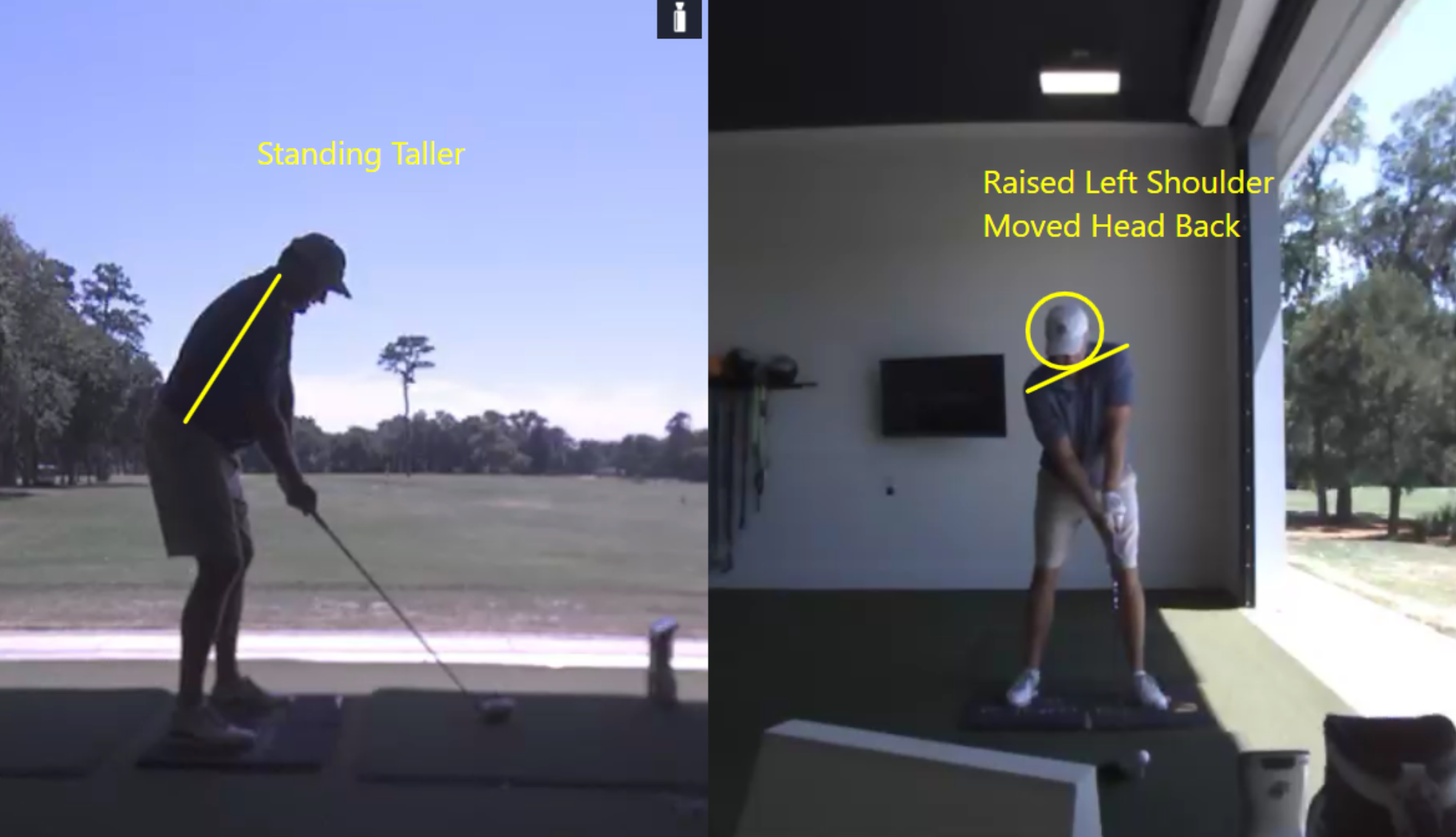
Following all the changes, Plecker revealed the impressive gains.
Bret’s attack angle leveled out to -0.4 degrees, his clubhead speed increased by 5 miles per hour (117), his spin rate decreased to 3,289, and his driver carry distance went up 27 yards (to 283 yards).
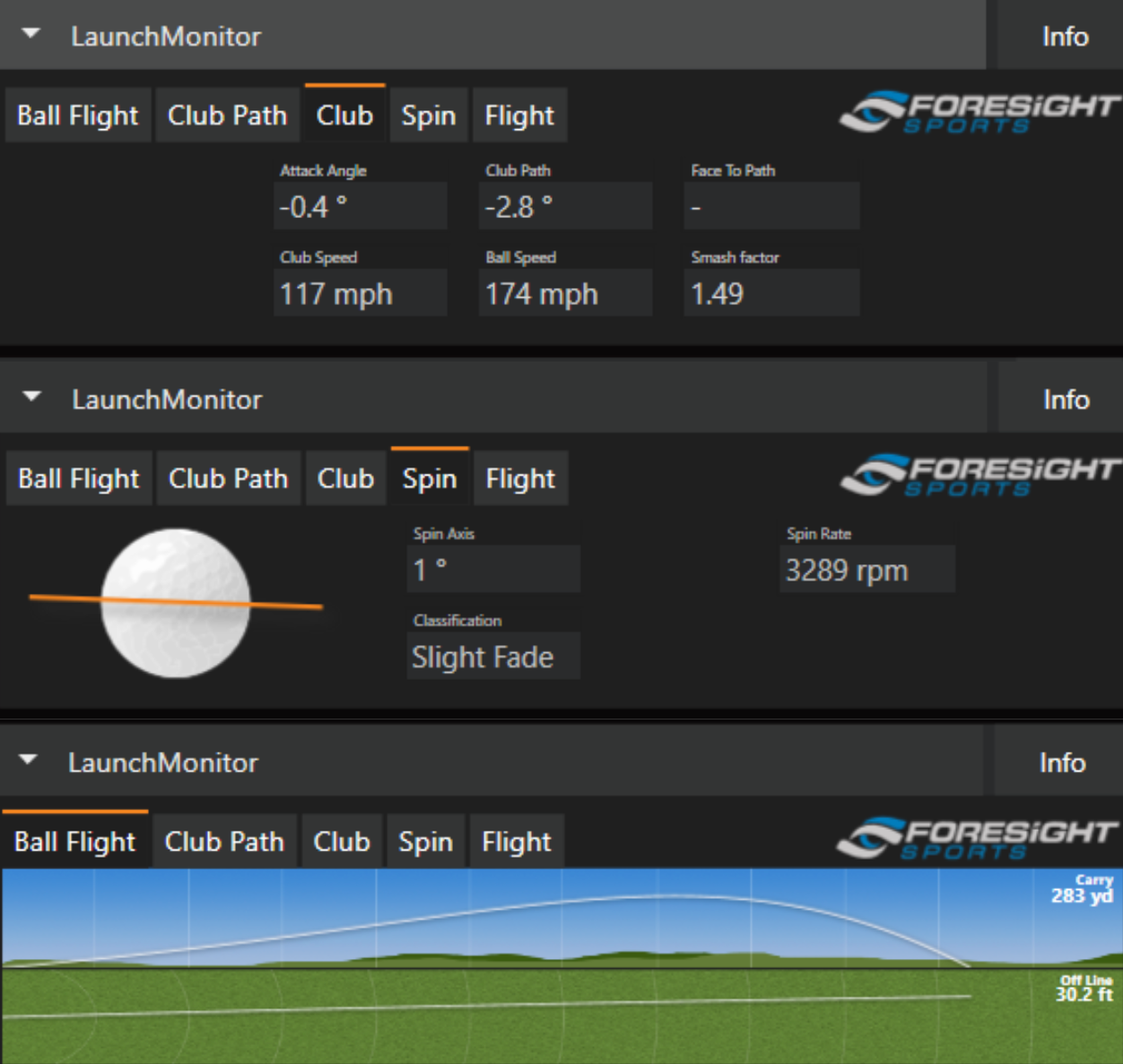
Many amateurs struggle with the same issues that Bret did. But by identifying the problem that was holding him back and putting in the work to improve, he saw how a new-and-improved swing led to better results.
